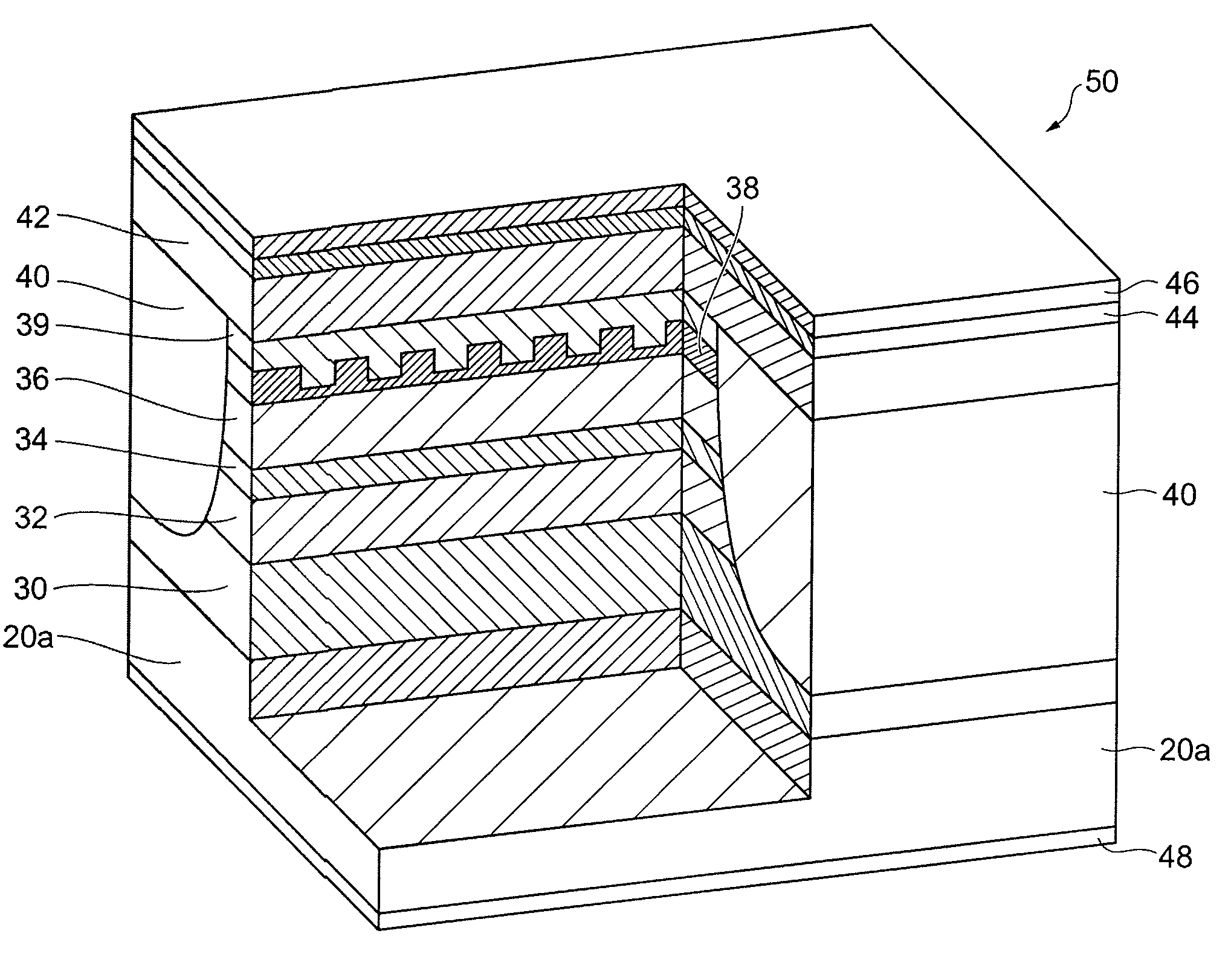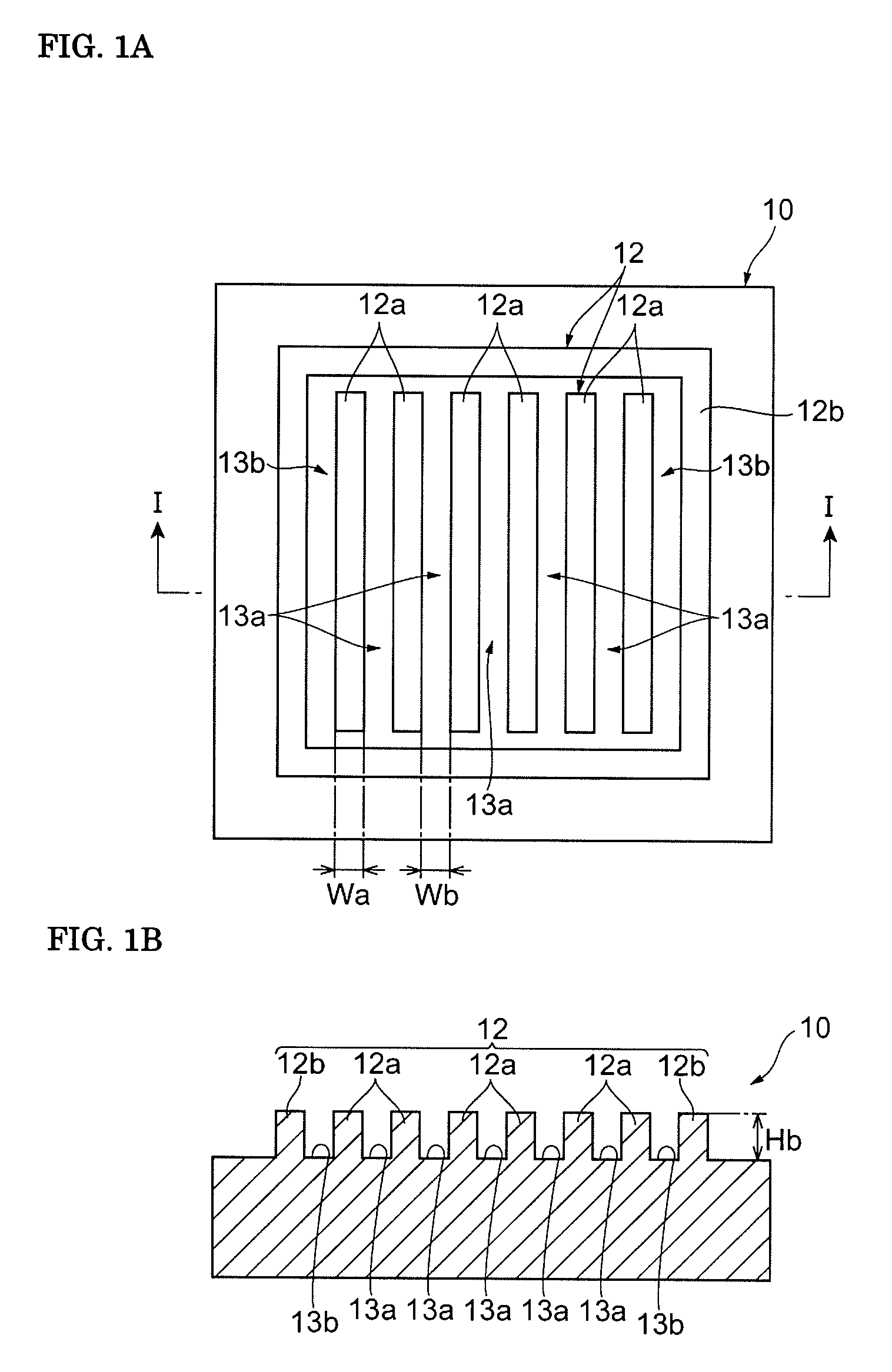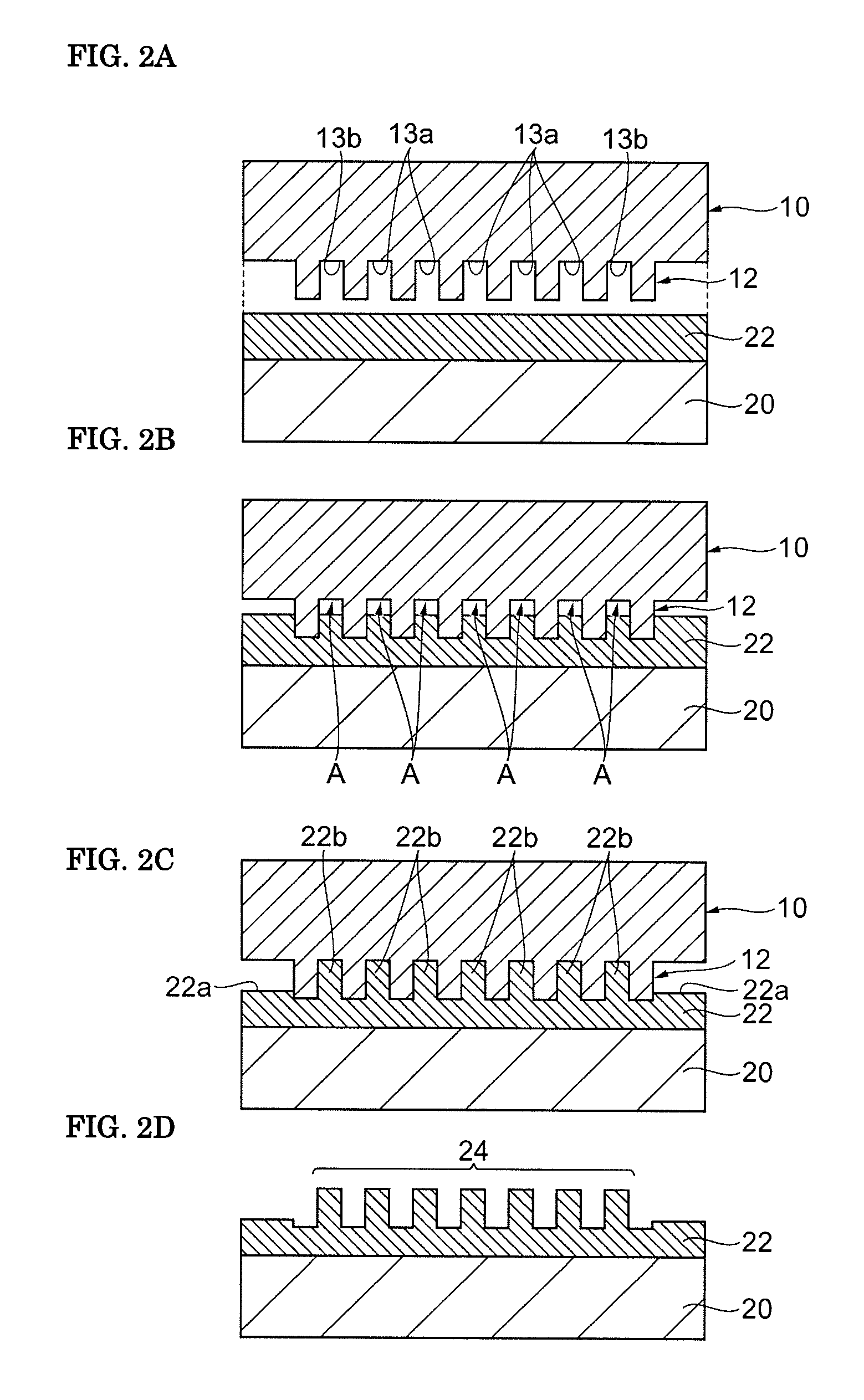Method of forming diffraction grating and method of fabricating distributed feedback laser diode
a laser diode and diffraction grating technology, which is applied in the field of forming diffraction gratings and fabricating distributed feedback laser diodes, can solve the problems of affecting the accuracy of diffraction gratings, and affecting the quality of diffraction gratings, so as to achieve accurate transfer, reduce the viscosity, and facilitate the effect of movement into the r
- Summary
- Abstract
- Description
- Claims
- Application Information
AI Technical Summary
Benefits of technology
Problems solved by technology
Method used
Image
Examples
modification example
[0041]FIG. 3 is a cross-sectional side view showing another example of a mold used in this embodiment. A mold 11 shown in FIG. 3 has a plate-like shape as in the mold 10 shown in FIG. 1A, and has projections and recesses 14 for forming a diffraction grating. In the projections and recesses14, the pattern density differs depending on the position in the mold. Specifically, the width of a plurality of projections 14a is large in one region in the mold 11 and small in another region. The width of a plurality of recesses 14b is large in one region and small in another region. That is, the aspect ratio of the recess 14b differs depending on a given region in the mold 11.
[0042]In such a case where the pattern density in the projections and recesses 14 differs depending on the position in the mold, it is necessary to completely fill the patterns of the projections and recesses with a resin even if the region in the mold has a low pattern density (where a large amount of a resin is required...
PUM
| Property | Measurement | Unit |
|---|---|---|
| viscosity | aaaaa | aaaaa |
| width Wb | aaaaa | aaaaa |
| pressure | aaaaa | aaaaa |
Abstract
Description
Claims
Application Information
 Login to View More
Login to View More - R&D
- Intellectual Property
- Life Sciences
- Materials
- Tech Scout
- Unparalleled Data Quality
- Higher Quality Content
- 60% Fewer Hallucinations
Browse by: Latest US Patents, China's latest patents, Technical Efficacy Thesaurus, Application Domain, Technology Topic, Popular Technical Reports.
© 2025 PatSnap. All rights reserved.Legal|Privacy policy|Modern Slavery Act Transparency Statement|Sitemap|About US| Contact US: help@patsnap.com



